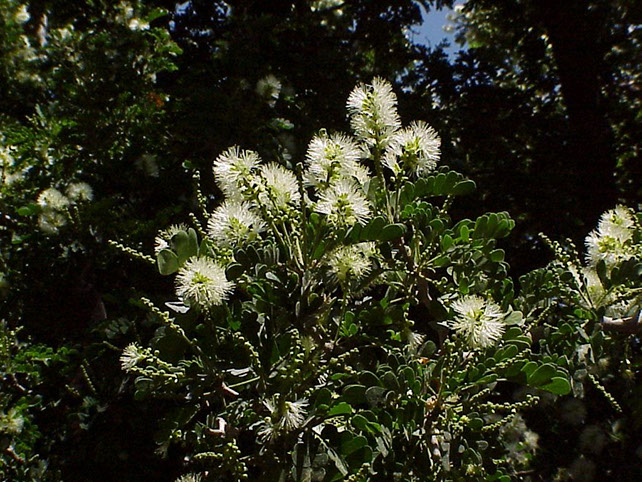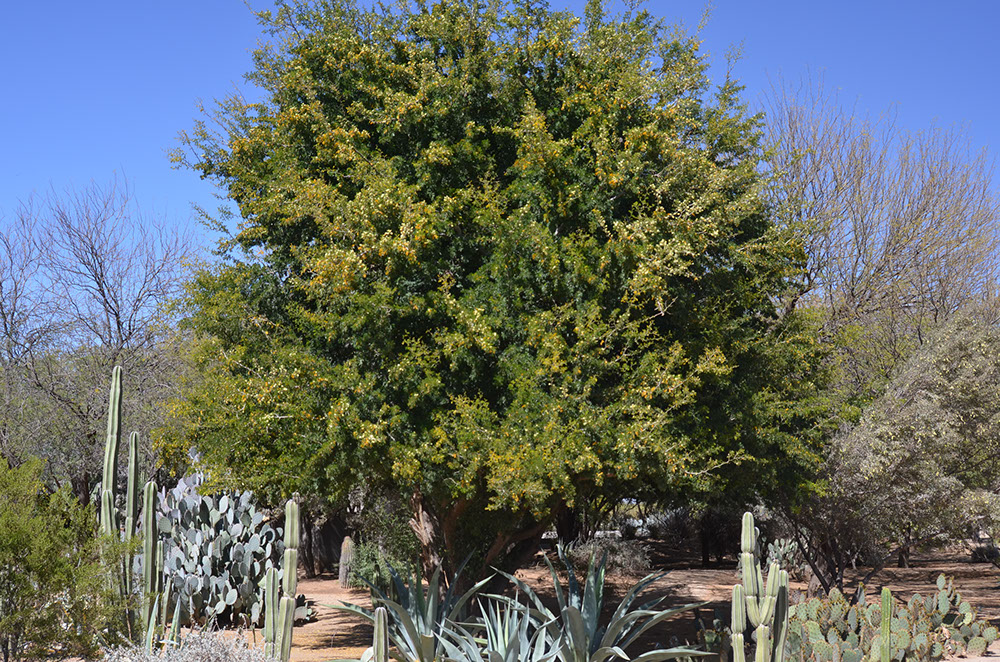


Pithecellobium flexicaule
(Ebenopsis ebano)
Texas Ebony
Foliage: Evergreen
Mature Height: 15’ - 30’
Mature Width: 15’ - 20’
Growth Rate: Slow
Hardiness: 20 degrees F
Exposure: Full Sun
Leaf Color: Dark Green
Shade: Filtered
Flower Color: White or Yellow
Flower Shape: Flower Spike
Flower Season: Spring to Summer
Thorns: Yes
Propagation Method: Seed
Sizes Available: #25


A respected desert landscape designer once quipped that Texas Ebony trees were too green to be a desert tree. Due in part to a slow growth rate and chronic lack of saleable trees, Texas Ebony (Pithecellobium flexicaule) is among the most under-utilized and under appreciated arid landscape tree. The common name itself is a misnomer since the wood is dark mahogany to purple or brown, not black. The trees are highly drought tolerant, slow growing and are moderately cold hardy to 25 F and may be damaged or killed below 20 F. Leaves are made-up of clusters of shiny, dark green leaflets. Branches are highly spined and zig-zag at each node. Branching is usually dense resulting in a thick canopy that casts dense shade. This combination of thorns and dense branching makes Texas Ebony ideal for security screen plantings. It is also used as an accent tree with its striking dark green leaf color, smoky grey bark and semi deciduous growth habit. The tree prefers well drained soils and full sun. Young trees require pruning to insure that they will mature with desirable shape. Clusters of fragrant yellow or white flowers are produced from May to October with 4 to 6 inch seed pods maturing within 30 days. Pods split open naturally to release most seeds. Reports suggest that Texas Ebony can grow to 15 to 30 feet.

© Copyright 2000-2020 Arid Zone Trees